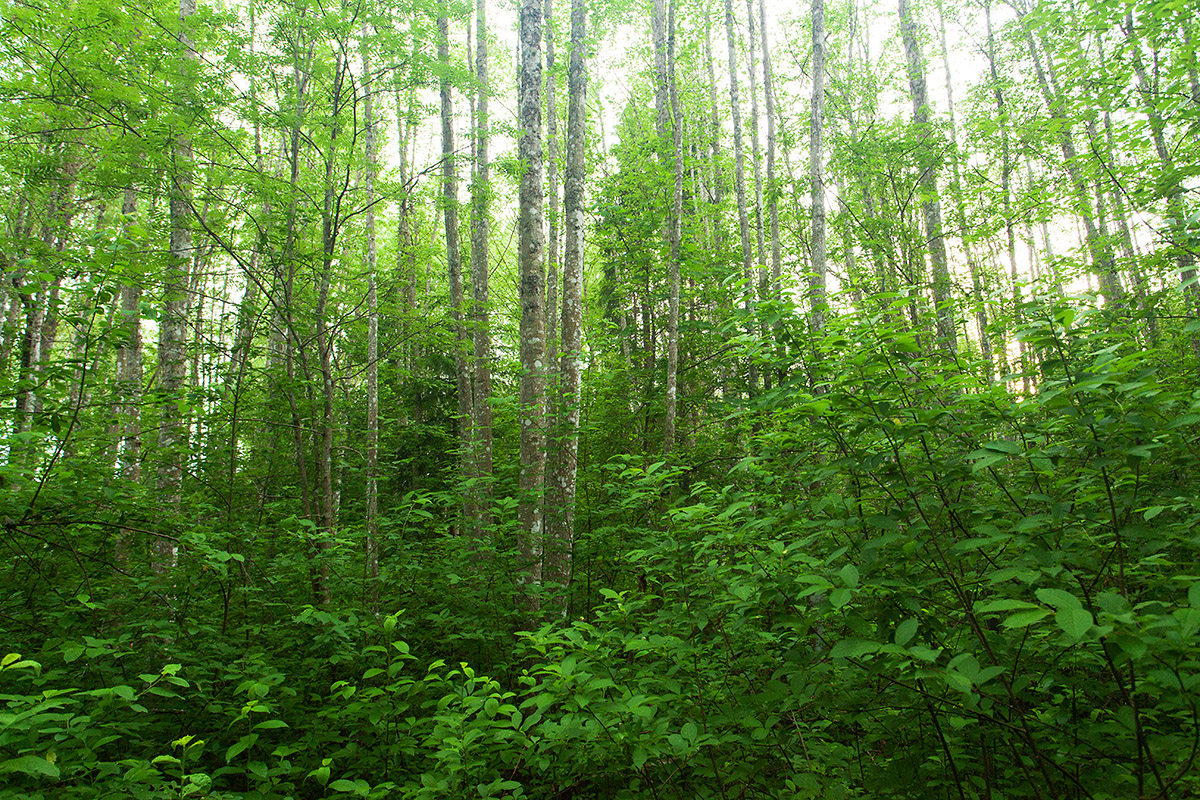Temperate forests are important for carbon sequestration
The most important cycles of matter in the biosphere are the carbon, nitrogen, phosphorus, oxygen, and sulphur cycles, as well as the water and rock cycles. The forest is a plant community with the largest biomass and a very large area of the biosphere, covering about a quarter of the planet’s land area. The role of forests is important primarily in the carbon, oxygen, and water cycles, but also quite significant in the nitrogen cycle. These processes are also important for climate processes.

The rate of forest cycles is reflected in the annual increase in plant mass per hectare – for example, 5 tonnes in the northern taiga spruce forests, 8 tonnes in the Eastern European oak groves, and 33 tonnes in the tropical rainforests of the Congo basin [1]. The rainforest’s substance cycle is, therefore, fast, i.e. the leaves and branches that fall to the ground decompose quickly and are used again by the plants. In this way, organic matter does not accumulate in the soil of rainforests and the processes of carbon sequestration and release are balanced.
In temperate deciduous forests, however, the canopy becomes humus and the soils are very fertile, which is why deciduous forests as a whole are significantly better carbon and nitrogen sinks than rainforests. Boreal forests, or taiga, are also good carbon and nitrogen sinks, but unfortunately, due to global warming, the area of these forests is shrinking and mixed forests are on the rise. The carbon and nitrogen cycles are accelerating and more greenhouse gases are being released into the atmosphere, which, in turn, is accelerating climate change [2].
Atmospheric nitrogen enters the soil from the atmosphere as a result of symbiotic nitrogen sequestration and also under the influence of thunder; a smaller amount of nitrogen also enters the soil through precipitation. However, nitrogen amounts in Estonian forests are rather modest. Of the Estonian tree species, only alders are able to symbiotically bind atmospheric nitrogen and thereby enrich the soil with nitrogen – this puts alders in a special position compared to other forest trees. Unfortunately, the sequestration of atmospheric nitrogen using symbionts is a rather expensive process for the trees in terms of energy: for example, sequestering 100 kg of N requires about 2 tonnes of dry matter, or about 5 m3 of timber, from the alders [3].
Forests also play a very important role in the overall water cycle. Adult trees retain water and stabilise the water level, acting as a natural filter and contributing to creating rain. As growing trees absorb water, the water level in the ground generally rises as a result of clearcutting. However, extensive felling on river banks leads to fluctuations in the levels of the rivers, from draining to flooding [4].
Last modified: 05.11.2021
____________________________
[1] Ü. Tamm. Mets. Eesti Entsüklopeedia, 2009.
[2] M. Portillo Estrada. On the relationships between plant litter and the carbon and nitrogen cycles in European forest ecosystems : a thesis for applying for the degree of Doctor of Philosophy in Ecophysiology = Euroopa metsaökosüsteemide süsiniku- ja lämmastikuringe seosed taimse varisega : väitekiri filosoofiadoktori kraadi taotlemiseks ökofüsioloogia erialal / Miguel Portillo Estrada ; [Institute of Agricultural and Environmental Sciences, Estonian University of Life Sciences]. Eesti Maaülikool, 2013.
[3] M. Strandberg. Metsas tuleb näha nii puid kui ka mulda. Sirp, 27.03.2013.
[4] Mets kui osa vee ringlusest. Eesti metsa abiks, 2020.